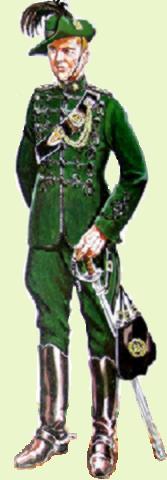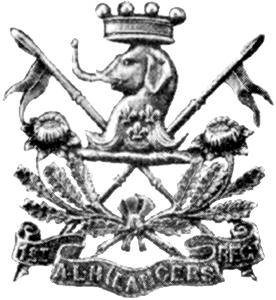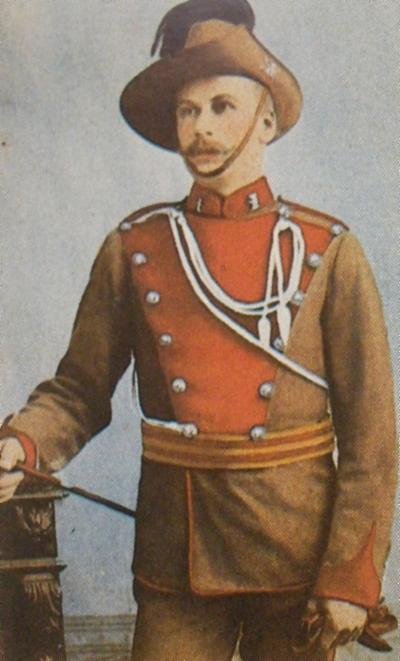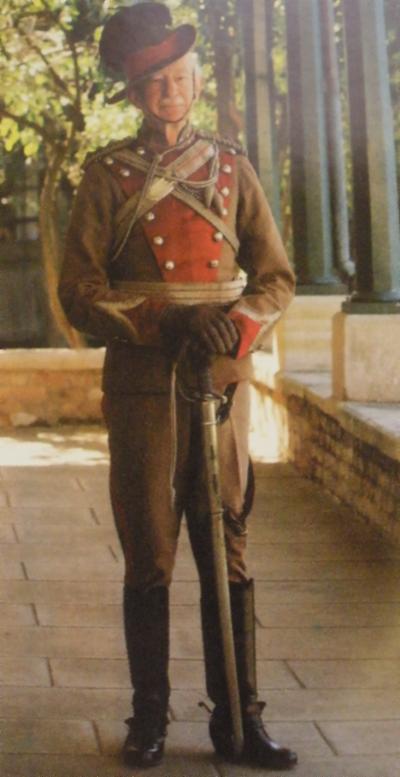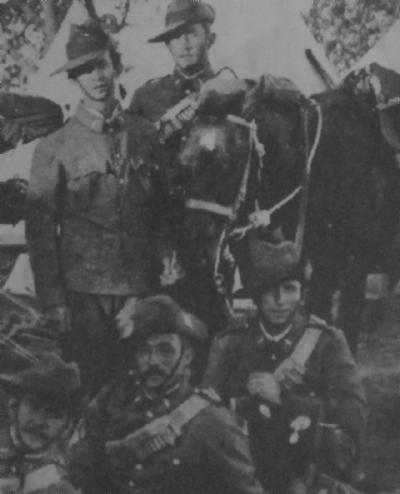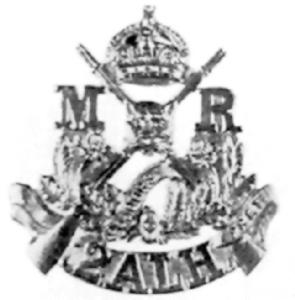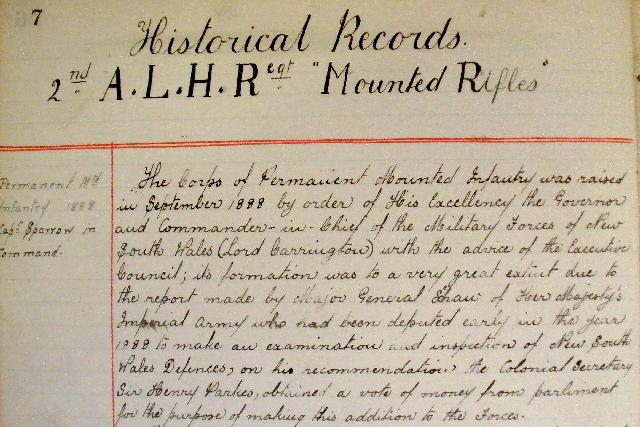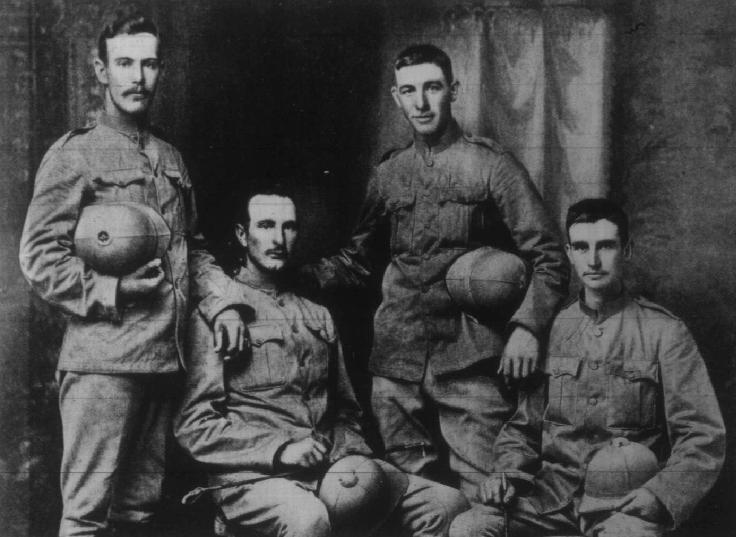Topic: Militia - LHN - 3/11/7
AH
Australian Horse
History, Part 1, 1897-99
1st Australian Horse (Boer War) [1899 - 1901]
3rd (Australian Horse) Australian Light Horse [1903 - 1912]
11th (Australian Horse) Australian Light Horse [1912 - 1918]
7th (Australian Horse) Australian Light Horse [1919 - 1935]
7th/21st (Australian Horse) Australian Light Horse [1936-1937]
7th (Australian Horse) Australian Light Horse [1937 - 1942]
7th (Australian Horse) Australian Motor Regiment [1942 - 1943]
7th/21st (Australian Horse) Recce Regiment 1948 - 1937]
7th/21st Australian Horse [1949 - 1957]

Hearth and Home
Allied with: King Edward's Horse (The King's Overseas Dominions Regiment).
1st Australian Horse
The following text is extracted from and article written by R. J. Marrion and R. L. Campbell called 1st Australian Horse which first appeared in the March 1981 edition of the magazine, Military Modelling.
In June 1897, the New South Wales' Government gave official sanction to the raising of a volunteer cavalry regiment consisting of 410 men, all ranks, as a trained force to assist with the defence of the state and, indeed, Australia. The first enrolment took place on the 28th August, 1897 at Murrumburrah, recruitment being completed by 20th November. In all there had been a total of 3000 applications to join the regiment.
Command was given to Colonel Kenneth Mackay who, having lived most his life in various parts of the interior of Australia had great experience of bushmen and stockmen, etc., from the early days of cattle ranching. He had also previously raised and, as a captain commanded the West Camden Light Horse.
The amount of enthusiasm displayed by applicants to join this new regiment meant that Colonel Mackay had the pick of a type of man and horse (all volunteers [See note below regarding volunteers, ed.] provided their own horse and saddle) unsurpassed for their zeal and stamina; which went without saying when a four-hour drill often meant a 40 mile ride! Officers, with the exception of the Commanding Officer, the second in command and the adjutant, were, for the most part inexperienced as the men in the art of formal military training and cavalry drill, being squatters or sons of squatters.
There were hardly any official-issue carbines and only 50 swords; the main weapons at this time being civilian firearms and the stock whip. Instructors were in short supply and were men who had seen previous service in the Mounted Rifles or Artillery and, although conversant with their own drill books, still lacked any formal cavalry training. However, the Regiment was particularly fortunate in having as second in command Captain A.C.F. Ferguson, an Aide de Camp on the Staff of the Governors' Household and a serving officer in the 2nd Life Guards, and the adjutant, Lieutenant R.R. Thompson and ex-4th Dragoon Guard and New South Wales' Lancer who contributed much in the early formative days.
The regimental title, The "First Australian Horse" and the colour of the uniform, "Myrtle Green" (a deep full green - not a Rifle Green), were chosen by Mrs Mackay, the colonel's lady.
First Australian Horse Officer's Uniform
[See: Australian Horse Uniform, 1897-1912]
Immediately the men were enlisted they were measured for their uniforms and an order was sent to Messrs Hobson and sons of London to provide 400 serge jackets, pantaloons, slouch hats, boots, spurs, military bridles, bits, haversacks and other impedimenta of the cavalry soldier, at a total cost of £7,000; this was the total clothing allowance for the Regiment, and it was spent three and a half years in advance! A trumpeter was borrowed from the artillery and a band was formed which was based with the Headquarters' Squadron at Goulburn.
Ship after ship arrived from England until eventually the long-awaited uniforms and equipment arrived, before Easter 1898, just in time for some units of the Regiment to receive them prior to their fist nine-day camp and inspection by Major General French. The first official parade of the Regiment was to take place on Easter Saturday at 3pm, without formal cavalry training and without squadron and troop leaders being appointed. Although this was the first time, since its formation, that the whole Regiment had been together and as the various squadrons were many miles apart, they almost managed to muster their full strength and paraded four squadrons and a mounted band. Formal training or not, General French expected the Regiment to be able to walk, canter and gallop past in good order. All men were expert horsemen and under the expert eyes of Captain Ferguston and Lieutenant Thompson the regiment were given half-an-hour's drill - with swords, which had only been issued that morning! The Regiment performed its manoeuvre's well and passed muster.
On 18th May, 1898 the Regiment acted as escort to Earl Beauchamp, who had arrived to take up the post of Governor of New South Wales. On 31st March, 1898 the Regiment changed its designation to 1st Australian Horse and Earl Beauchamp became its Honorary Colonel and maintained an unfailing interest in the Regiment even after his return to England.
The Regiment was brigaded with the New South Wales' Lancers and New South Wales Mounted Rifles to form the New South Wales' Mounted Brigade and in 1898, its strength was increased to 515 men. In 1899 the strength was yet again increased to 638 all ranks.
Additional Information
Volunteer v Militia
Two distinct types of part time service was available to men in Australia at the time, either Volunteer service which meant that there was no payment by the government to the participant, or Militia service where the participant received an emolument equivalent to the daily pay rate of an Imperial Soldier pro rated to the actual hours served. At the time referred to by the above article, the standard payment for a base grade recruit in the Imperial Army was 2/6 (two shillings and six pence) per day or about 2009 AUD $120.00 per day. The use of volunteers declined within the Australian setting as it was considered essential that a contractual arrangement was maintained by the Department of Defence and the individual soldier which would bring forth many additional disciplinary aspects not available in a volunteer situation.
Previous: 3rd/11th/7th Australian Light Horse
Next: Australian Horse, History Part 2
Further Reading:
3rd/11th/7th Australian Light Horse
Militia Light Horse, New South Wales
Australian Militia Light Horse
Citation: Australian Horse, History Part 1



